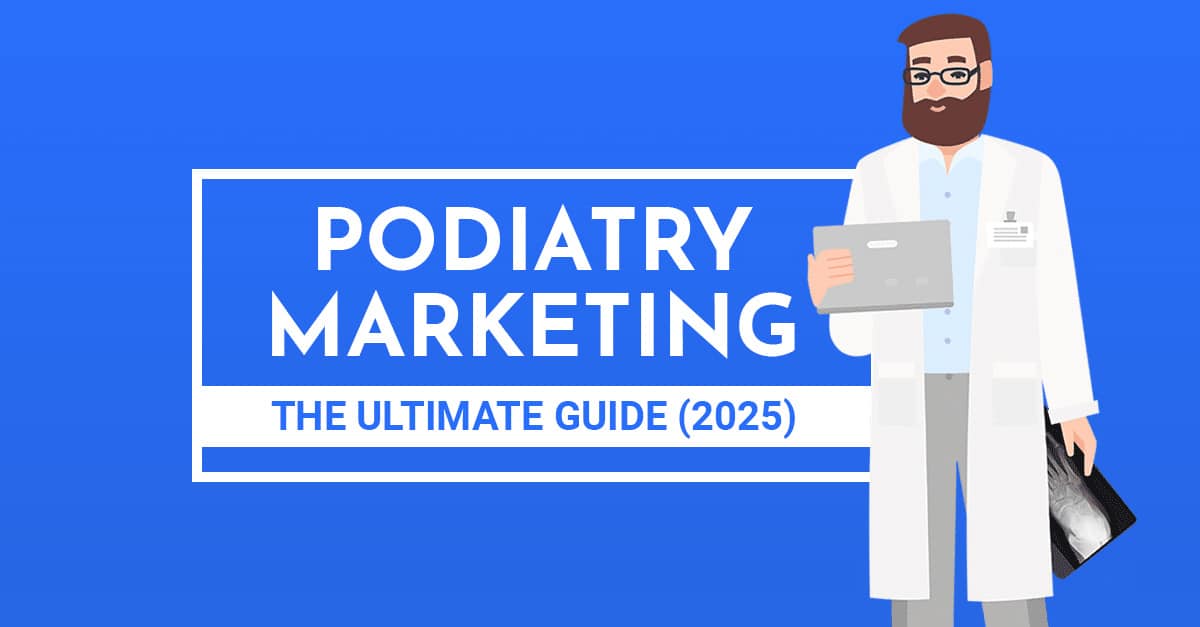
Podiatry Marketing: The Ultimate Guide (2025)
This is the definitive guide to podiatry marketing in 2025.
In this comprehensive guide I’ll cover:
• What is podiatry marketing?
• Understanding the patient journey
• How to create practice promoters
• How to measure your marketing efforts
• Lots more
So if you want to understand how marketing can attract new patients and grow your practice, you’ll love this guide.
Let’s get started.

Contents
Chapter 1:
Podiatry Marketing Basics
In this chapter, I’ll cover the fundamentals of podiatry marketing.
First, you’ll learn precisely what podiatry marketing is (and why it’s relevant to you and your practice.)
I’ll show you how podiatry marketing can directly benefit your practice.
What is Podiatry Marketing?
Podiatry marketing is about helping solve peoples’ problems. It’s the process of communicating the solutions you provide to patients, referral sources, and the public.
Whether it’s discovering your clinic on Google or how they are treated by your staff, every step along the patient journey is a form of marketing.
Why is Podiatry Marketing Important?
Marketing is essential because it gives you and your clinic visibility and moves you closer to your practice goals.
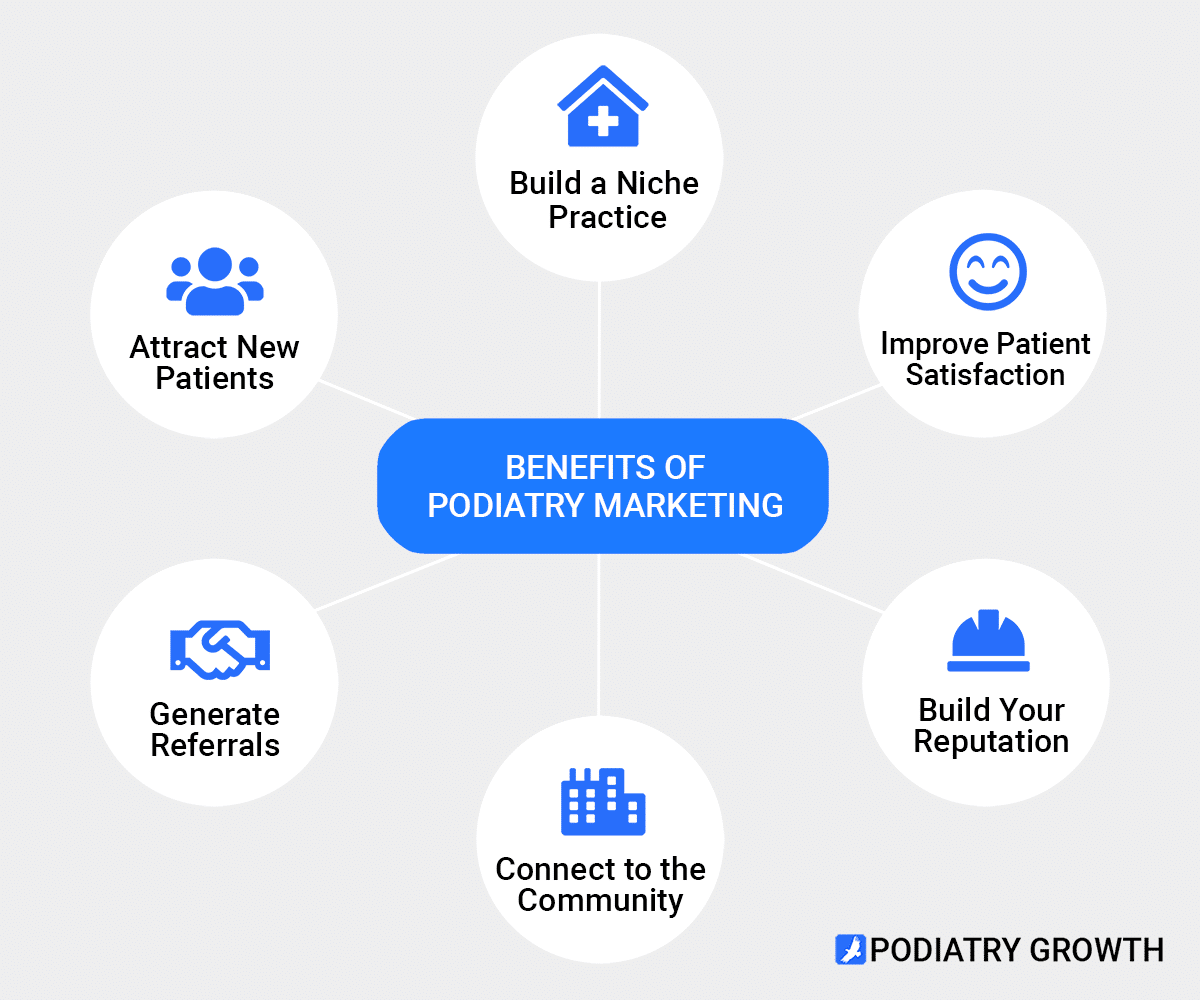
This is a small sampling of podiatry marketing’s benefits.
Put another way:
Marketing is about investing in yourself and your practice. When consistent efforts are made, the benefits compound over time.
With that, it’s time for chapter 2.
Chapter 2:
The Patient Journey
In this chapter, I’ll show you podiatry marketing from a different perspective, the patient.
Therefore, we’ll follow the path of a patient from a stranger to a practice promoter.
Let’s go.
What is the Patient Journey?
How do patients end up in your waiting room?
Sure, you have that “How did you hear about us?” or Referring Physician box on your intake forms. But when’s the last time you really put that information to use?
In order to better understand your patients, it’s good to take a walk in their shoes.
The patient journey is the sum of experiences that patients go through when interacting with you and your clinic.
Here’s a look at each step along the patient journey:
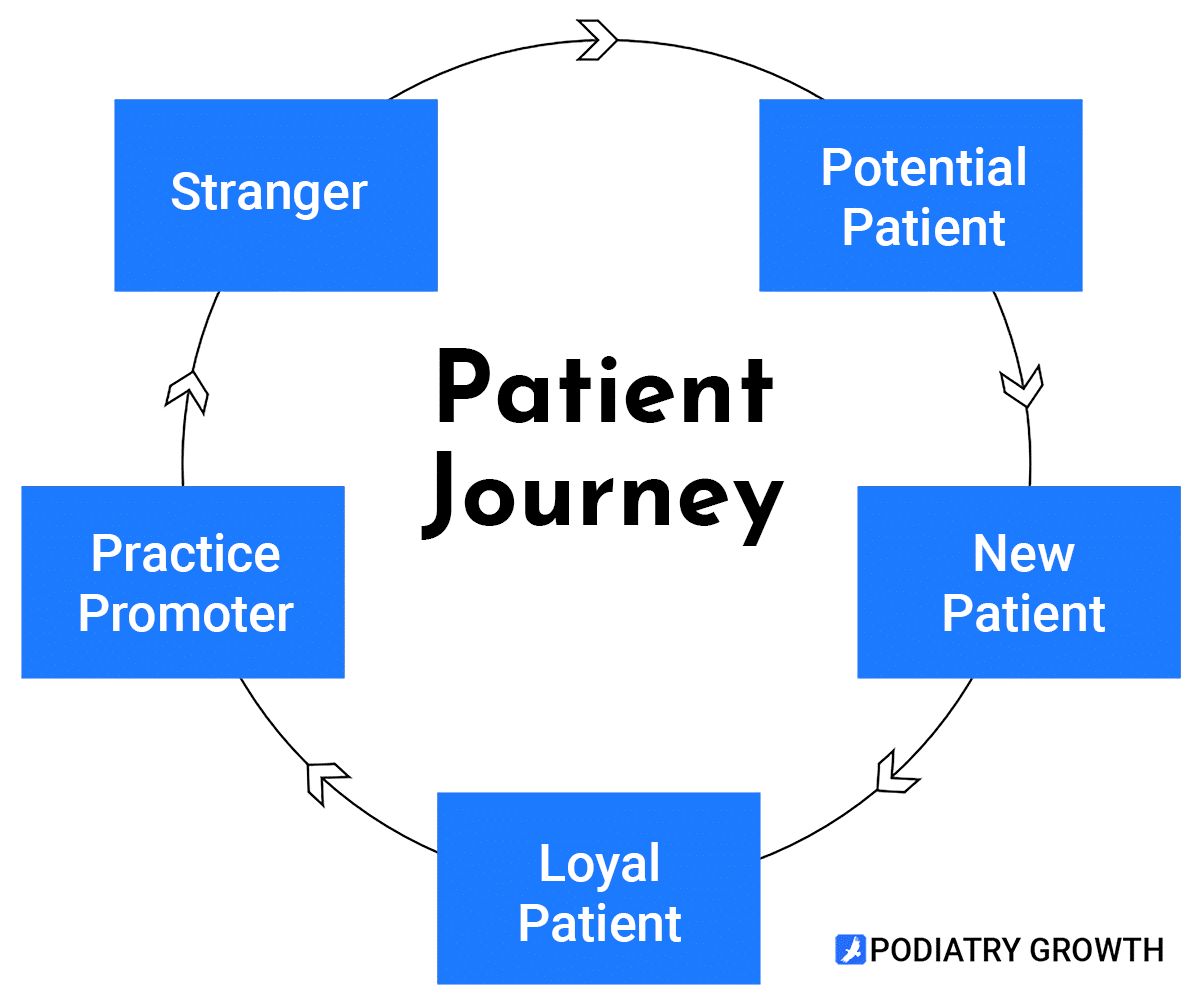
Stranger
This is a pretty obvious one. These are people in your community that have never heard of you.
Unless you’ve previously built a strong online presence, this will likely be the largest segment of potential patients.
For your clinic to be considered, they first need to know that you exist. It’s only after discovering you online or offline that you become an option.
Potential Patient
Now that they’ve heard of you, your clinic can now be considered. But just being familiar isn’t enough for them to schedule an appointment.
Next, you must build trust and show that you’re the expert with the skills and experience to solve their problems.
Potential patients will perform online and offline research. Do patient reviews, your website and other information sources help or hurt your reputation?
Once a patient feels confident that you can deliver the solution, they’ll schedule an appointment.
New Patient
Now, marketing switches from primarily taking place outside the clinic to within.
Each way a person comes in contact with your clinic – before, during, or after an appointment is called a touchpoint.
The good news is that you can influence or directly control many patient touchpoints.
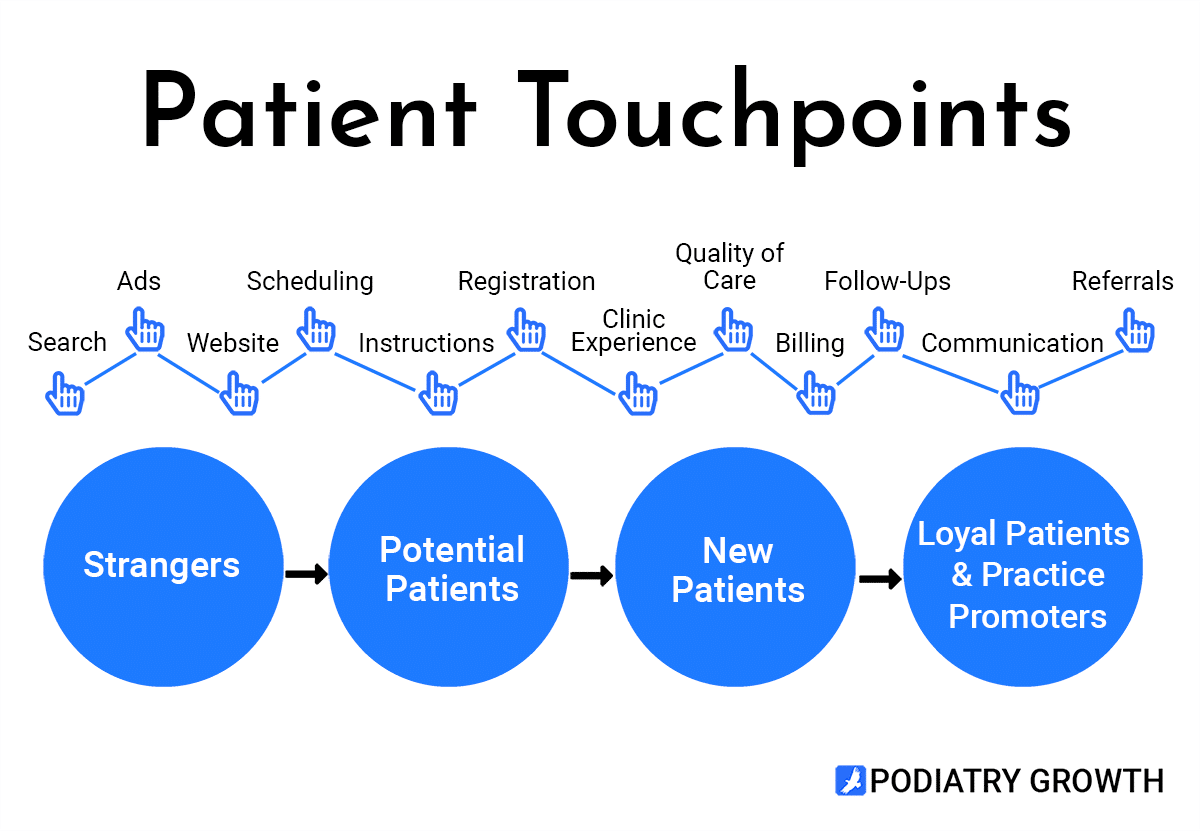
While the quality of care you provide and the results you achieve are essential, these are only a portion of the patient’s experience. The total sum of these touchpoints will determine how patients view you and your clinic.
For example, let’s say you completely relieve a patient’s heel pain on the first visit. But from her perspective, it was difficult to find parking, schedule a follow-up appointment, and there was an issue with billing.
How well do you think the patient will judge her experience?
Loyal Patient
If you can provide a tremendous overall patient experience, a new patient will become a loyal patient.
Now that they’re a loyal patient, they see you as “their foot doctor.” If other friends and family have foot and ankle issues, they’ll happily refer when asked.
They might even interact on your social media accounts or forward your patient email newsletter to others.
Practice Promoter
Sometimes you connect with a patient, and they want to tell everyone they know about you and your clinic.
Practice promoters aren’t necessarily a new category. They’re the most vocal of your loyal patients. They create positive leave online reviews and the trust they pass along by word of mouth is a valuable source of new patient referrals.
Moving someone from a stranger to a practice promoter is the ultimate goal of any successful podiatry marketing plan.
Next, we’ll talk about the two types of marketing.
Chapter 3:
Offline Marketing Basics
This chapter introduces you to a specific type of marketing: offline marketing.
I’ll provide a working definition and show you a real-world example.
You’ll learn the pros and cons of offline marketing.
What is Offline Marketing?
Offline marketing is any type of marketing that isn’t on the Internet. This means the Yellow Pages, TV, direct mail, phone, and billboards.
From creating a referral network to sponsoring a hometown youth sports team, offline marketing plays a vital role in reaching local audiences.
This is a form of advertising those of us who are 40+ grew up with. So, older generations are generally easier to reach through offline marketing than online marketing.
The dozens of Brian Urlacher billboards I see when driving to Chicago’s O’Hare Airport are an example of offline marketing.

Just my opinion, but I think he looked better bald.
Podiatry Clinic Example

By examining the billboard more closely, we can better understand the offline marketing campaign’s details and objectives.
Goal: Create awareness of the clinic and new location.
Content: Position Family Foot Care as “the best care” and announce a new clinic location.
Creative: Clean, professional design with a message they are the “best care,” two different foot images but not a phone number or website address.
Intended Audience: Local residents with feet and toes.
Location: N/A but it would make sense for the billboard to be close to their new or old clinic or where their ideal patients live.
Relevance: Billboards are a form of “interruption advertising” and this one has little relevance to most people driving by. Meaning that there’s a low likelihood people who see the billboard are currently looking for foot care.
Cost: If this billboard is located in mid-sized city with decent traffic, the estimated all-in costs for six months would be between $18,000-$30,000.
The main objective of this billboard is to transform strangers into potential patients. The fact that they don’t provide a phone number or website address is a clear indication they are not expecting to immediately create new patients with this billboard.
Is spending $30,000 for a billboard worth it? Chapter 6 will discuss creating a marketing system for your practice and how to estimate the return on investment of your marketing efforts.
Chapter 4:
Digital Marketing 101
Before digging into specific marketing strategies, it’s essential to understand the differences between offline and digital marketing.
A lot of people have heard of digital marketing, but still aren’t sure exactly what it is.
So let’s go and I’ll break it down for you.
What is Digital Marketing?
Compared to its offline counterpart, digital marketing is any form of marketing conducted online, such as email marketing and Google advertising. Digital marketing has become popular due to the cultural, technological, and societal shifts around us.
As life becomes more digital, the way podiatrists market their services has evolved. Not only is digital marketing sometimes more cost-effective than offline, but also it is a more direct way to connect with potential patients.
Let’s take a look at an example of digital marketing.
Google Search Ads
Today people search for everything online. So it shouldn’t be a shock that Google is a very common way to find and research foot and ankle care providers.
When the search term “podiatrist near me” is typed into Google, Google Ads, a map pack, and organic search results of potential options are displayed.
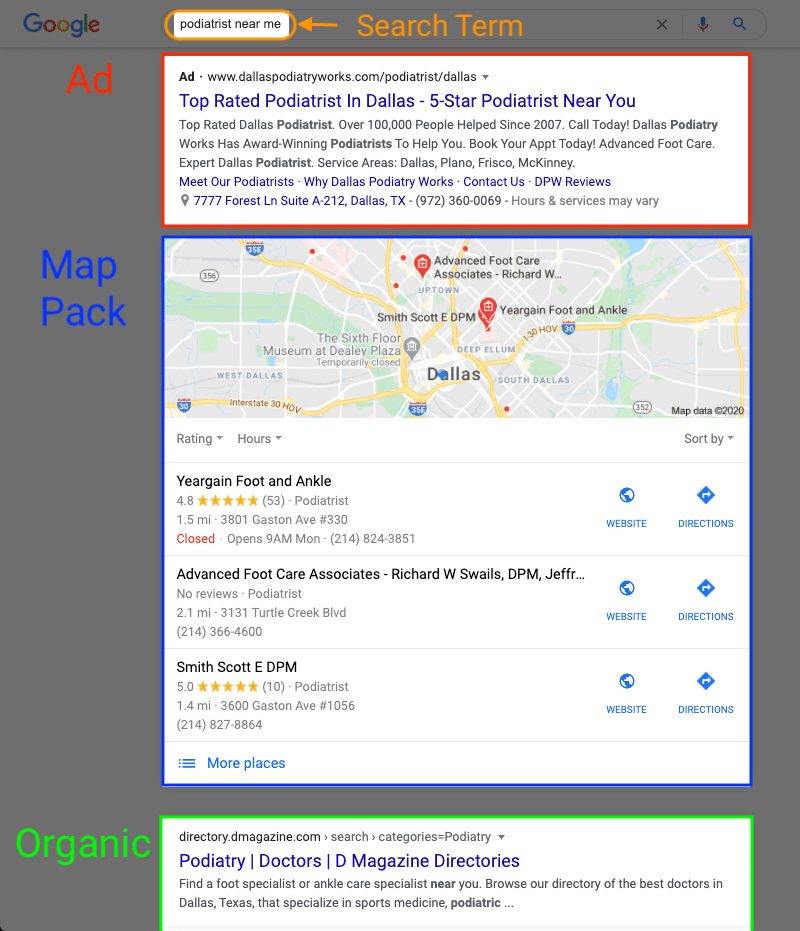
As you can see from the above example, creating a Google search ad campaign is one way to jump to the top of Google’s rankings.
The search was performed in Dallas, TX, so these ads will only be displayed to potential patients in that local area.
Let’s take a closer look at this specific Google search ad.

Goal: New patients to schedule an appointment
Content: This ad provides links to the clinic website, contact information and encourages people to schedule appointments
Creative: Google search ads are a combination of text and links; no images
Intended Audience: People in Dallas actively searching in Google for a “podiatrist near me”.
Relevance: This Google search ad is highly relevant because it matches the searcher’s desire to find a podiatrist. This information is valuable and helpful. It doesn’t rely on interruption like the billboard and many other forms of advertising.
Cost: The total cost for six months of Google search ads costs between ~$6,000-$12,000. This covers the cost of buying the ad space on Google and hiring a professional to manage and optimize the campaign.
A well-organized Google search ad campaign can:
1. Raise awareness to transform strangers into potential patients.
2. Provide the action step needed (booking an appointment) to move down the path from a potential patient to a new patient.
Instead of interrupting, matching a patient’s search intent with a relevant Google Ad is a powerful form of digital marketing.
You can learn more about about Google Ads in my in-depth guide for podiatrists.
Chapter 5:
Opportunities & Action
Now that you understand the basics of offline and digital marketing, it’s time to get tactical.
Specifically, I’m going to reveal the specific ways that marketing creates opportunities for patients to take action.
So without further ado, let’s look at how this happens.
Word of Mouth
A recommendation from a friend or family member is a strong signal to others that you can be trusted. When you provide exceptional care and opportunities for patients to share this experience with others, they will.
Positive word of mouth can happen both in the real world and online. Maybe a recent patient had a great experience and mentioned your clinic to her group of friends or left a glowing a 5-star Google review after receiving a request from you.
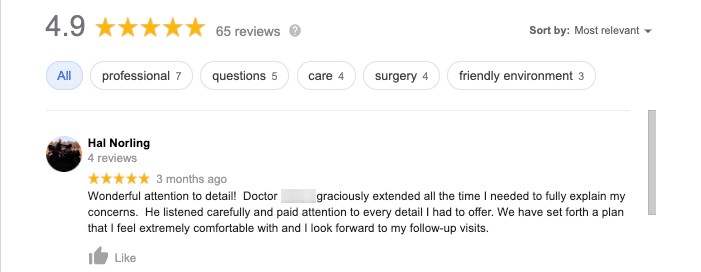
While some patients submit reviews without prompting, review software like GatherUp makes things simple. With SMS or email review requests, it’s possible to boost the number and quality of your reviews in a short period of time.
Digital and offline word of mouth helps move people from:
Stranger -> Potential Patient
Potential Patient -> New Patient
Stranger -> New Patient
Search
Whenever people have questions or problems, online search engines are generally the first places they look for answers.
If your clinic ranks high in Google’s map pack and organic results, it’s easier for potential patients to find your clinic contact information and website. This visibility makes it possible for potential patients to consider you as an option.
Search engine optimization or SEO is the practice of optimizing a website so it can be discovered and rank higher in Google search results.
After reading reviews and your clinic website, people can move from:
Stranger -> Potential Patient
Potential Patient -> New Patient
Stranger -> New Patient
Advertising
Whether on Google or Facebook, targeted online ads allow you to provide customized solutions to specific groups of people. Unlike a billboard that advertises to everyone who goes by, online ads are only shown to those who are the right patients for your clinic.
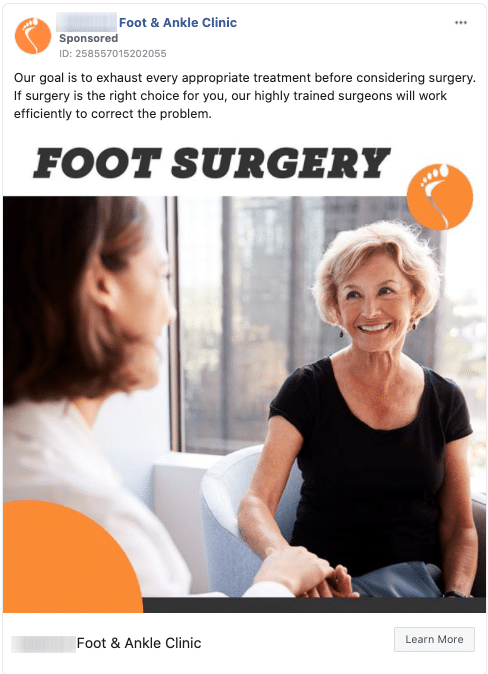
With the ability to be relevant and reach the right people, advertising can move people from:
Stranger -> Potential Patient
Potential Patient -> New Patient
Stranger -> New Patient
Communication
Communicating with your patients keeps them engaged with your practice and lets them know that you are genuinely concerned about their well being.
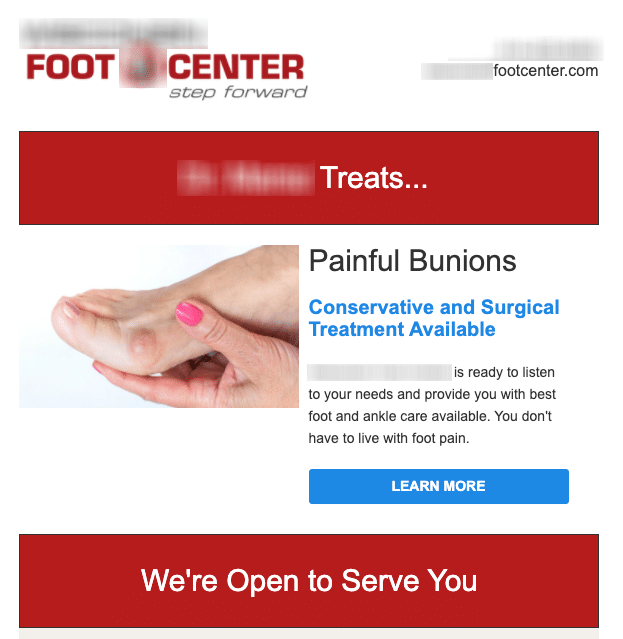
Patient email newsletters and surveys provide valuable feedback for you and your staff. These insights help you improve the patient experience and lead to higher patient satisfaction.
The more patients you can turn into loyal patients and clinic promoters, the more success you’ll have.
New Patient -> Loyal Patient
Loyal Patient -> Clinic Promoter
Patient Experience
Once the patient comes in contact with your practice, things change. As discussed earlier, patient touchpoints play a big part in the patient’s perception of you, your clinic, and their experience.
Providing an excellent patient experience creates loyal patients and can turn them into clinic promoters.
New Patient -> Loyal Patient
Loyal Patient -> Clinic Promoter
Chapter 6:
Podiatry Marketing System
Where do you want to go with your practice?
What goals do you hope that podiatry marketing can help you achieve?
Creating a marketing system for your practice will remove the mystery and make success repeatable.
Why Create a System?
Now you should understand the basics of podiatry marketing and the patient journey. Next, it’s essential to reflect on your previous efforts to build your practice. Did you have a system in place to review and measure the successes/failures of your efforts?
If you’re not able to measure results, it’s challenging to understand which marketing efforts generate a return on your investment.
Here’s a list of some example questions to get you started with your review:
- Which procedures or patient population drive profitability?
- What is the lifetime value of a new patient (LTV) to your clinic?
- Is there a specific niche or procedure that you enjoy or provide a lot of value?
- How could you get more of those patients on your schedule?
Now that I’ve got you going, I’m sure you’ll be able to answer some additional questions.
Going through this exercise will help you assess where you are currently and the direction you want to go. Then you’ll be able to measure and understand which marketing strategies are most beneficial to your practice.
Measure & Review
When creating a system, it’s essential to measure and review your progress.
Write down your goals so you can refer back to them later.
For my clinic, my primary marketing goal is ____________.
Here are a few common goals that can be measured to help you get started:
– New patient phone calls/month
– New patient online form submissions/month
– Number of new patient visits/month
– Number of surgical cases/month
Once you have created these measurable goals, you can investigate and start testing digital marketing opportunities unique to you and your practice.
There is no shortage of options including:
- Online advertising (Google, Facebook, etc.)
- Search engine optimization – SEO
- Online reviews requests
- Email marketing
- And more
But to identify the most profitable ones, you need a system to measure and review the results of these campaigns.
Creating a system allows you to see which marketing efforts are providing your practice with the best return on investment.
When you’re able to identify and reinvest in things that are working, your practice will reap the rewards.
Subscribe to the Newsletter
Share this Article on:
Build A Practice
You Love